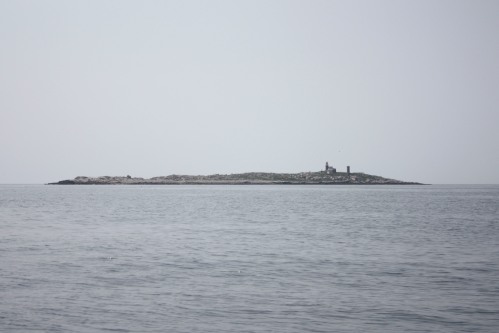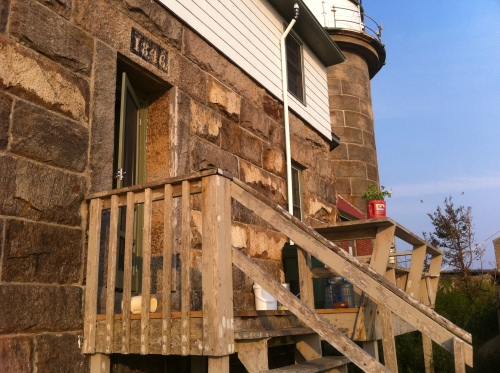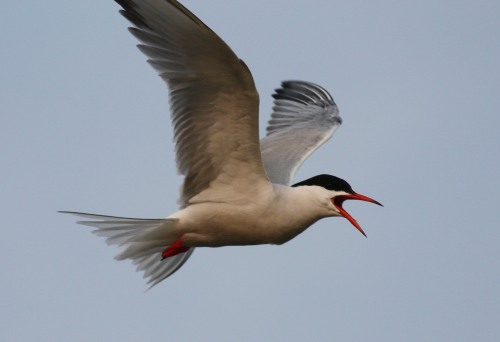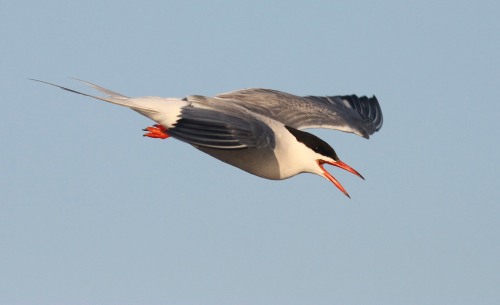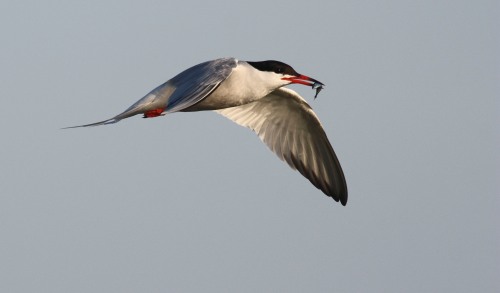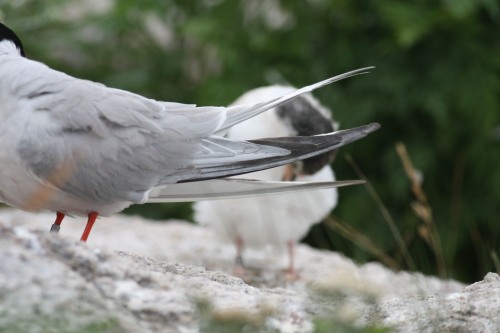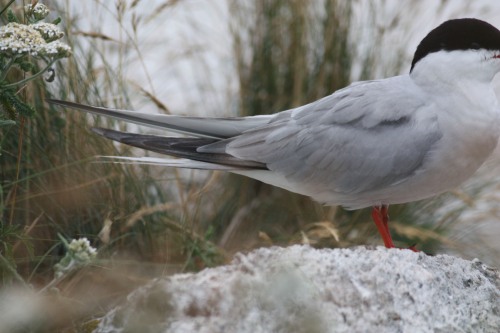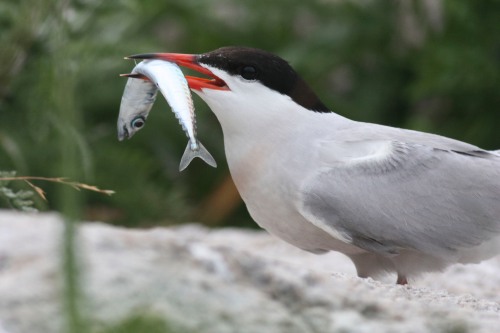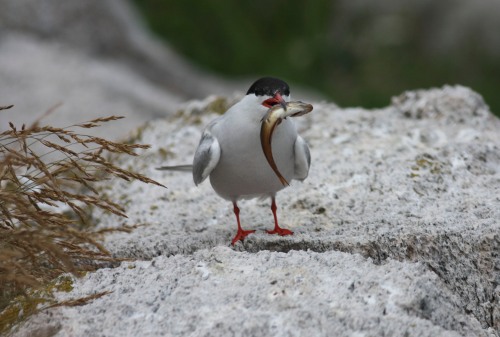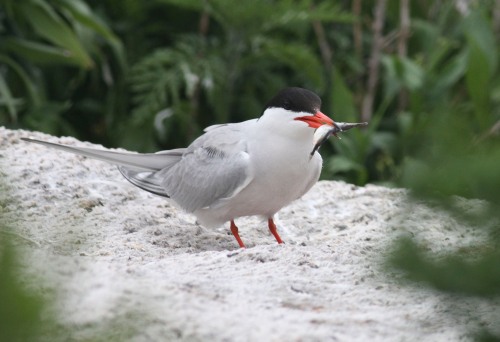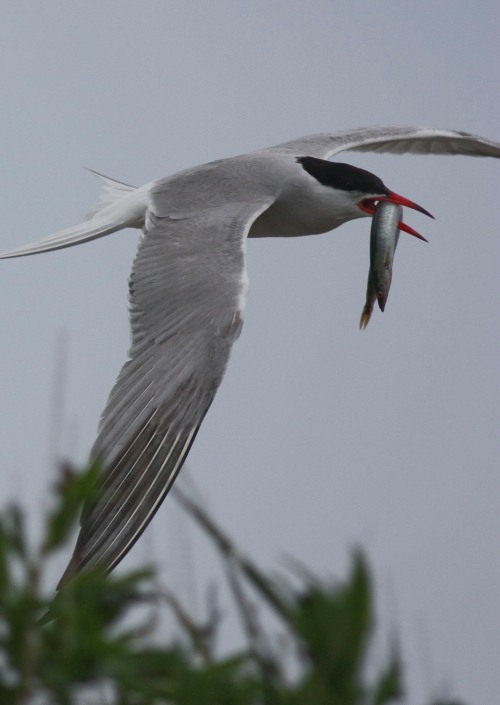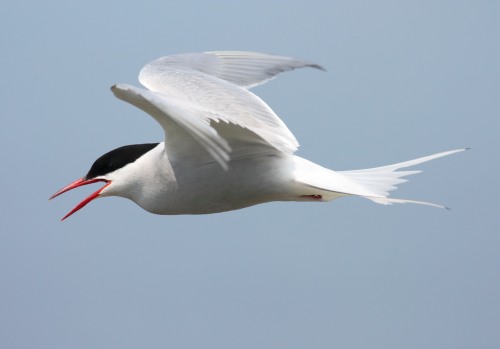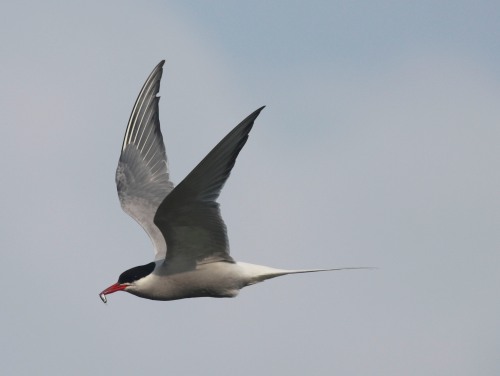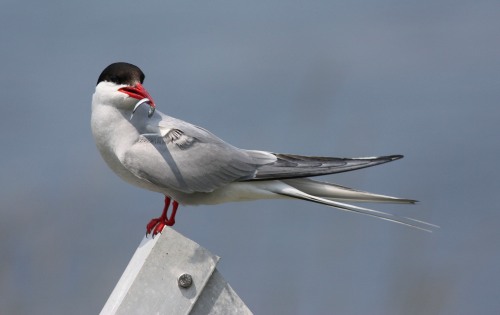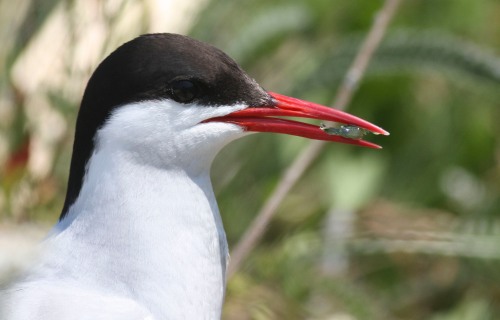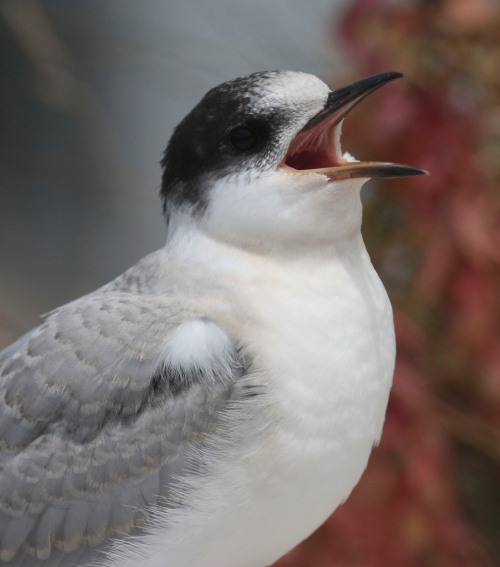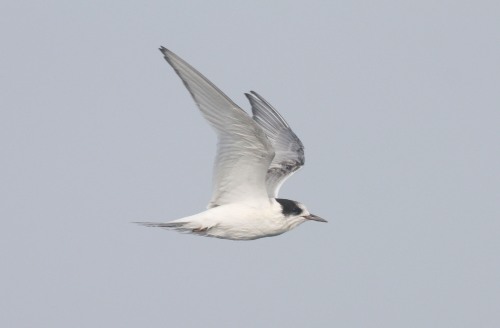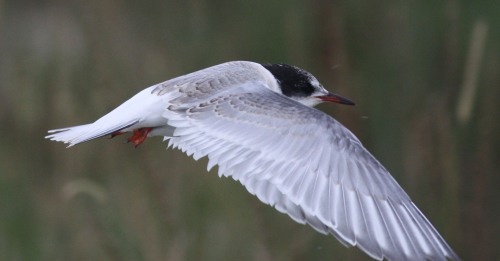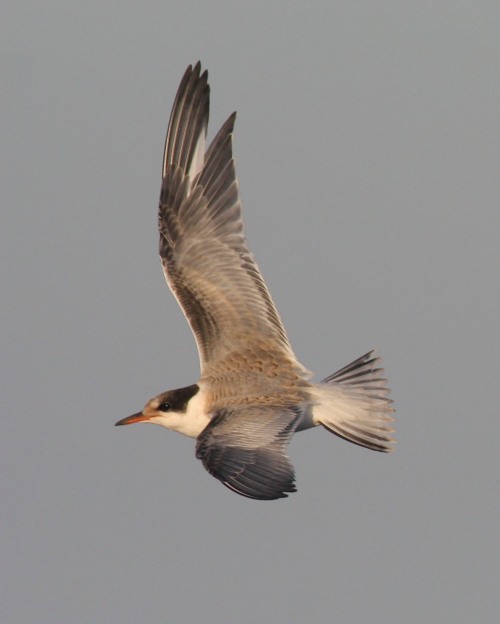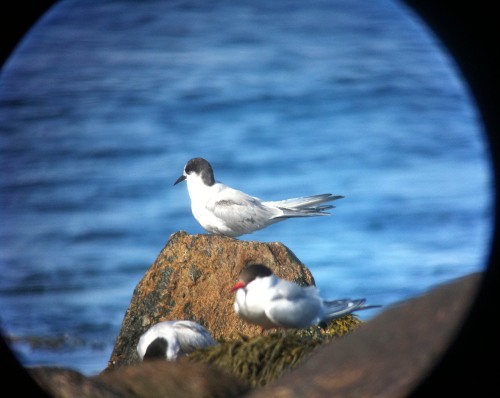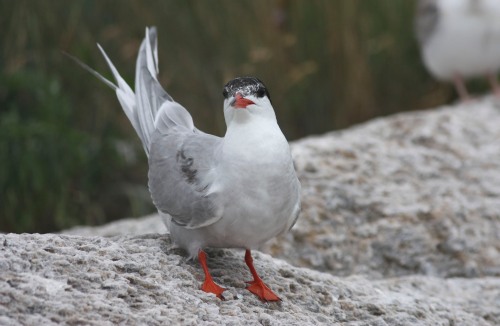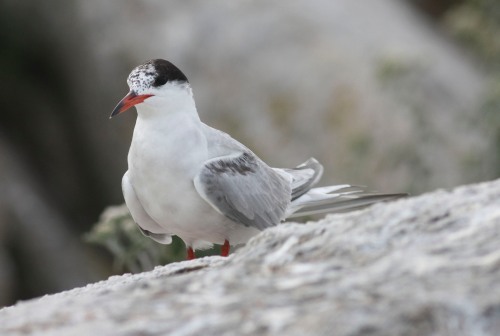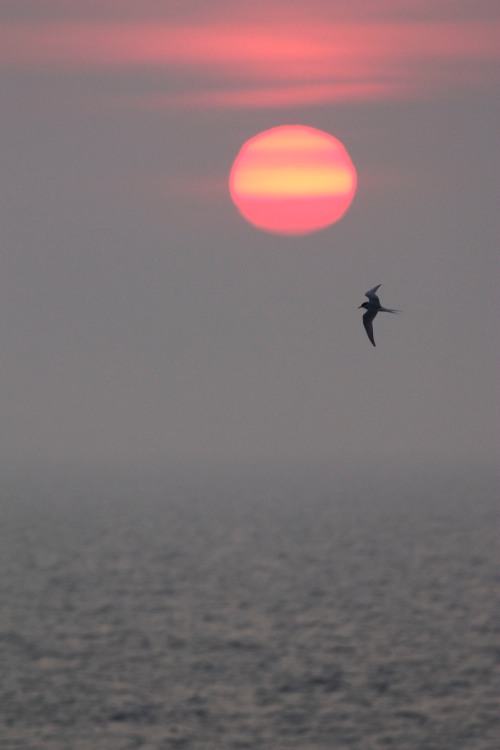(Be sure to also see Part One of this post.)

A spectacular Matinicus Rock sunset, with Moe's tower on the right.
If one visited Matinicus Rock during the day, finding evidence of Leach’s Storm-Petrels (short of checking burrows) would be hard to find. At night, though, Leach’s calls sometimes fill the air. We checked a plot of storm-petrel burrows on three occasions to assess the number of chicks fledged per nest (called productivity).
One night I walked down the boardwalk, recording with my phone. Almost immediately you’ll here a close storm-petrel, followed by some ones further away. Also notice a lot of Arctic Tern and Laughing Gull noise–and of course, the foghorn. Listen to some Leach’s Storm-Petrel calls.
The storm-petrel chicks are probably one of the cuter things in the world.
As I mentioned in Part 1 of this post, Manx Shearwaters nest on the island in small numbers, too, making Matinicus Rock the country’s only known breeding location for these birds (there are more in the Canadian Maritimes and off of western Europe). We used infrared cameras to detect activity in possible shearwater burrows, but shearwaters could also be heard calling on dark nights.
One night, I recorded a Manx calling in the distance. The bird starts after the first foghorn blast (at about 0:09) and continues for six seconds. It sounds like low, deep, labored breathing. Listen to a Manx Shearwater.

An infrared camera in position above a possibly active burrow.
Terns, shearwaters and storm-petrels are not all that Matinicus Rock has to offer–in fact, it’s much better known to be an alcid island. Razorbills, Atlantic Puffins, and Black Guillemots all nest on the island in numbers.
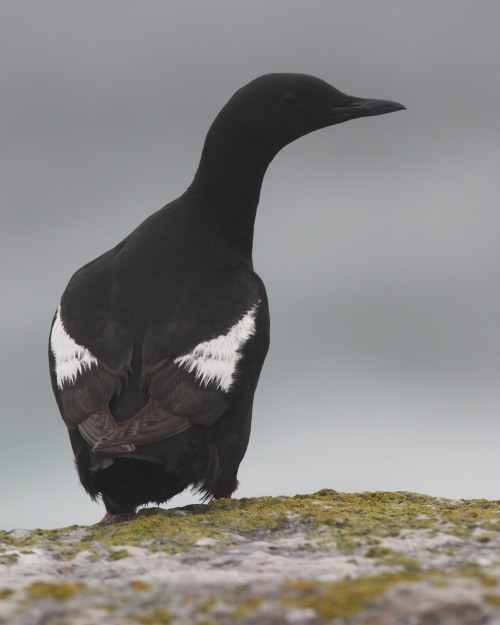
One of many charismatic Black Guillemots.
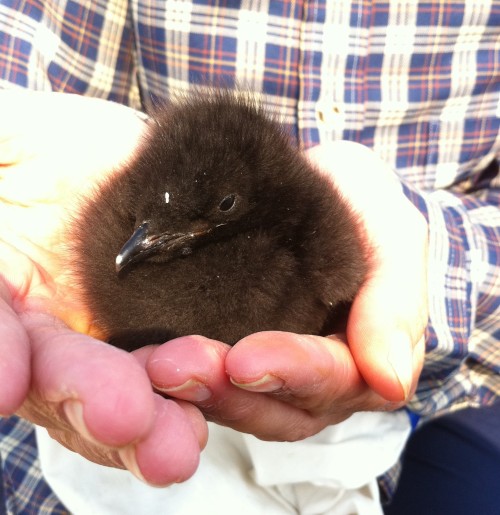
A Black Guillemot chick!
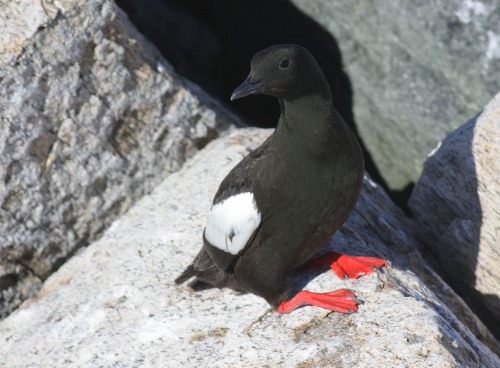
A guillemot showing off its red feet.
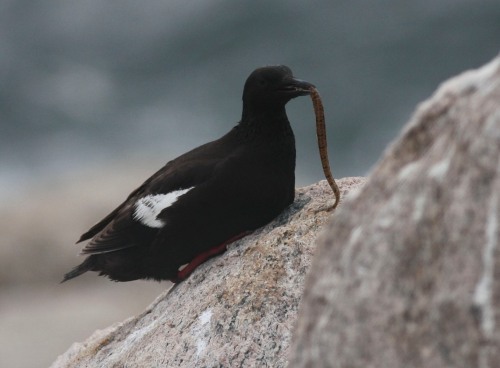
A guillemot with a rock eel, a major component of their diet.
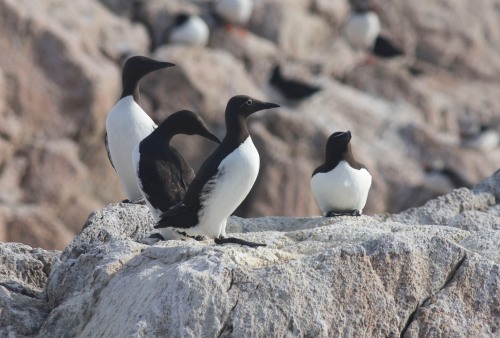
Common Murres, while not island breeders, often hang out on the north end of the island.
Razorbills, though, are one of the island’s most interesting colonial nesters. Unfortunately, they nest early, so by the time I arrived in late July the Razorbill chicks had all fledged. Luckily, many were still hanging around during that time, though they had all but vanished when we left Matinicus Rock in mid-August.
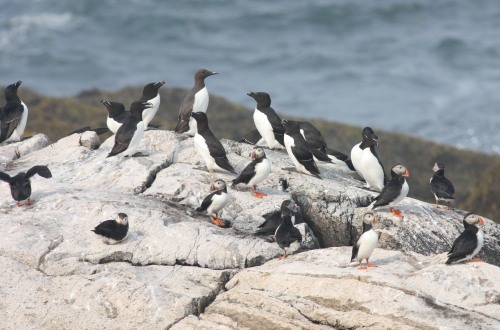
Razorbills congregated at sunset strip, these with some puffins and a murre.
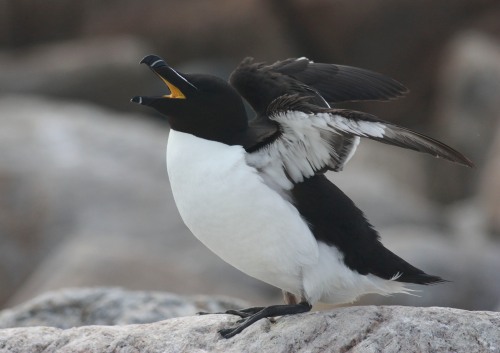
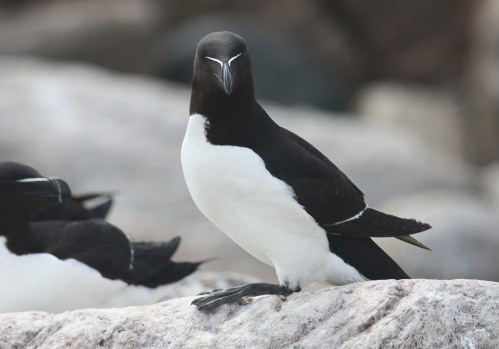
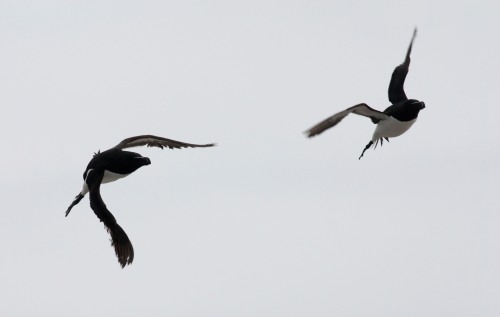
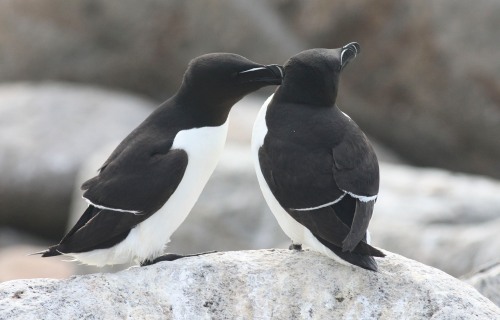
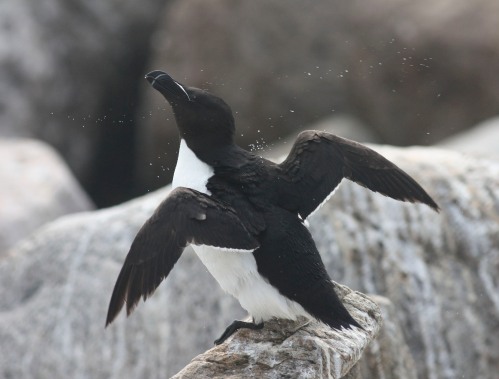
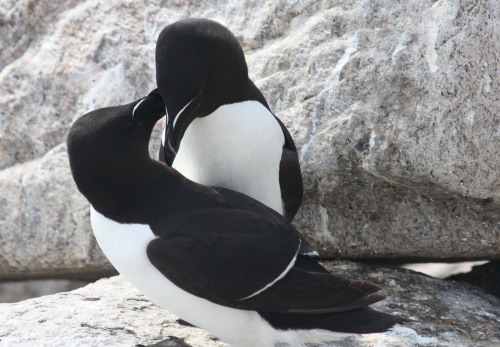
The real stars of the island, though, were the Atlantic Puffins.
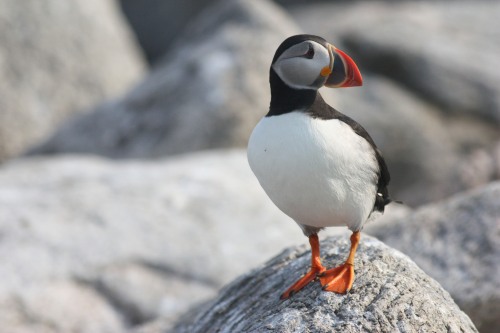
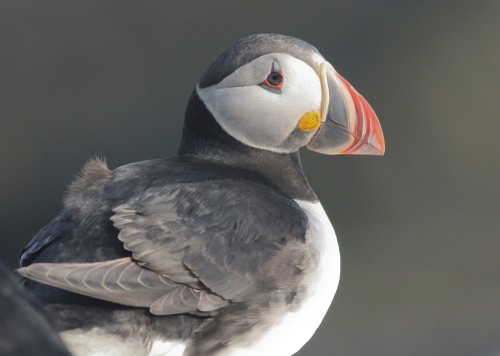

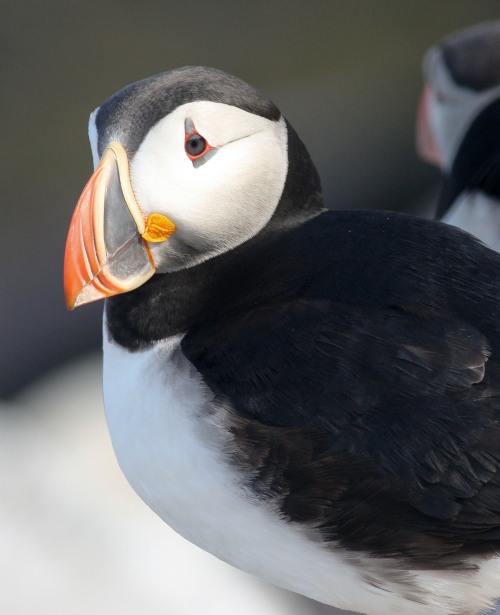
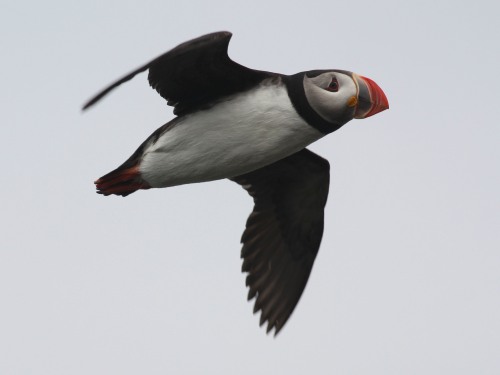


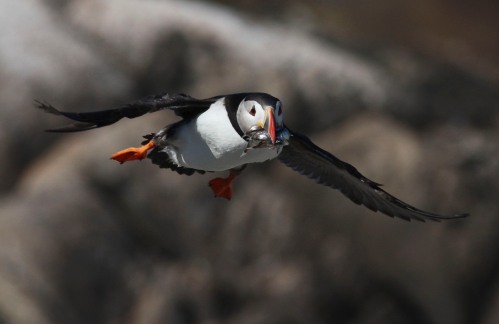
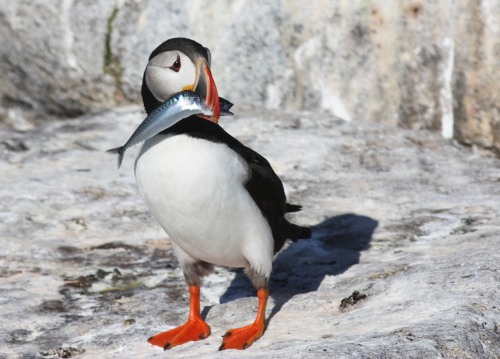
Puffin with a mackerel.
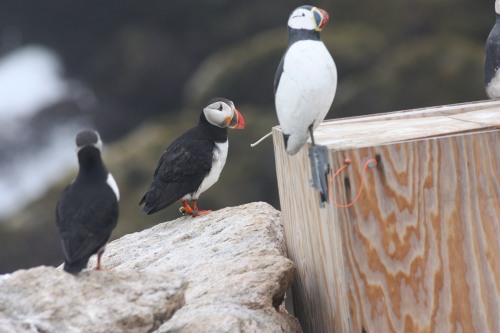
We tried to recapture a puffin with a geolocator that had been affixed last year--and, although he sat right next to our box trap, he never stepped up.
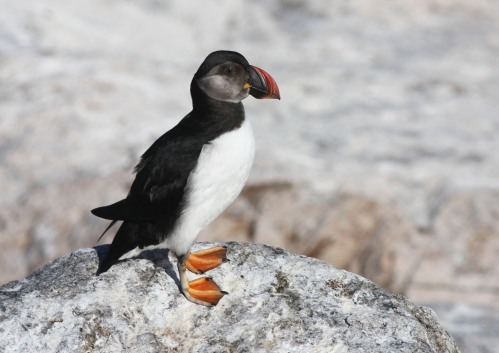
A few second-year puffins were around.
Part of the work we did with puffins was resighting their bands. This consisted of sitting in blinds and finding close puffins with visible bands–then reading and recording them to note puffin presence and movement.
We “grubbed” over 200 puffin chicks this year–that is, we took them out of their burrows to band. Grubbing is sometimes a challenging process, taking strategy, skill, creativity, and determination.
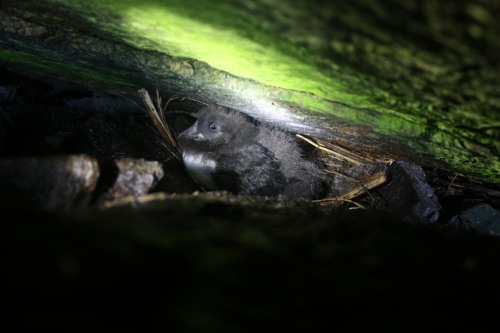
A puffin chick, just asking to be grubbed.
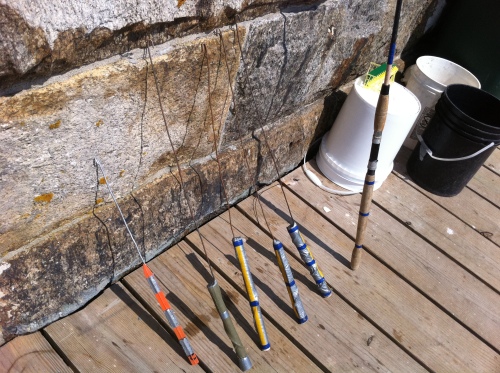
Grubbers, the tools of the trade. Each grubber (one small, four large, and one supergrubber) has a small hook at the end that we can snag on a chick's leg to coax them to within reach. Puffins' legs grow very quickly and are very sturdy; no birds were ever hurt during the grubbing process.

The monstrously long supergrubber comes in handy with those hard-to-reach chicks.
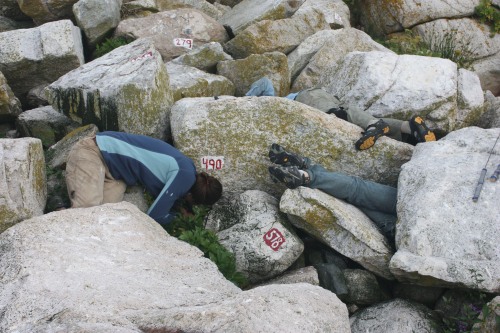
A three-person grub in progress. We got the chick.
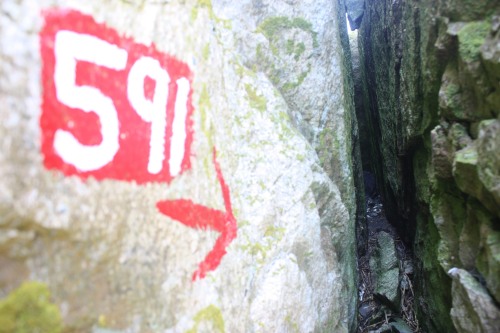
Burrow 591 with chick, "General Santa Anna" (we name all the chicks), barely visible in the back. This would be a job for the supergrubber.
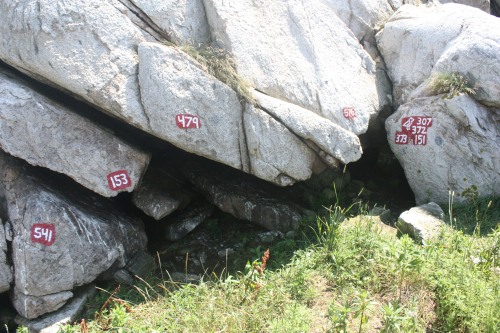
The "complex". Lots of chicks to grub inside!
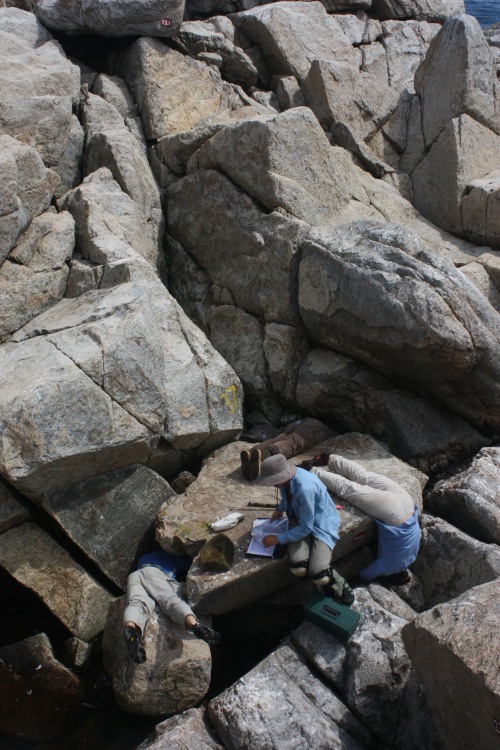
Another successful grub in the works. I got this one in the end!
We found a couple pairs of small alcid wings on the island as well, having apparently been killed by a Peregrine Falcon, probably this past winter. The wing chord, at 114 mm, fits perfectly for Dovekie!

We did have a chance to go off-island for a boat trip. A great boat trip, as it turned out.
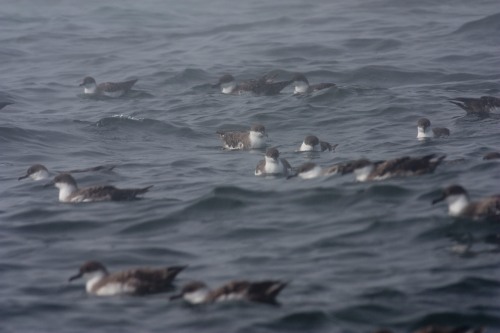
A group of Great Shearwaters.
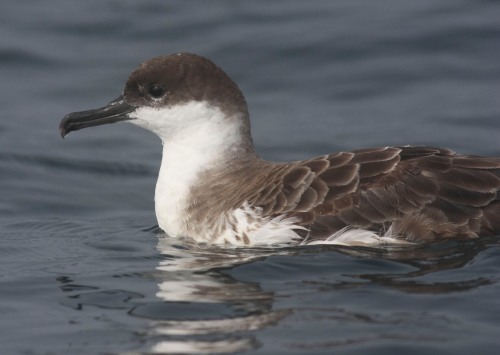
Great Shearwater.
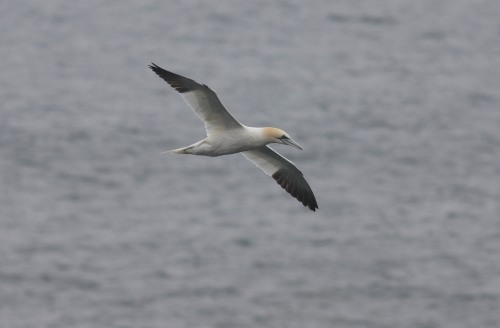
Northern Gannet.
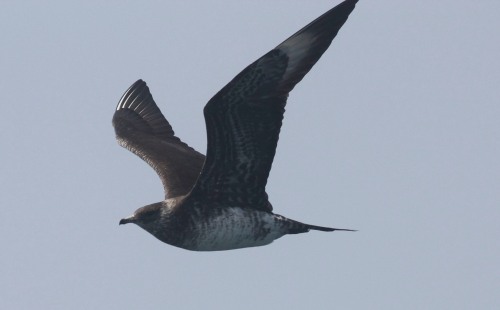
We saw a number of jaegers from the island and a couple from the boat.
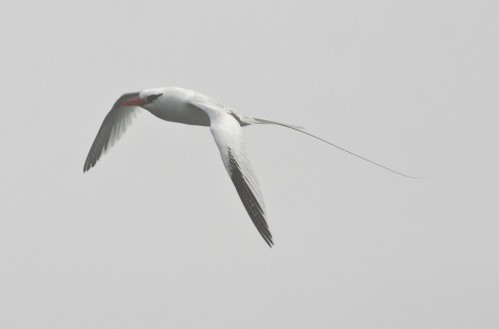
Our target--Troppy, the Red-billed Tropicbird! This bird has summered in the area for years.
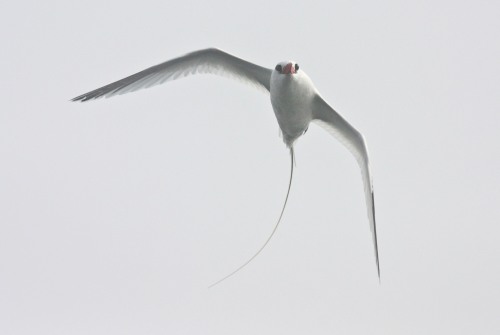
Troppy flew right over us!
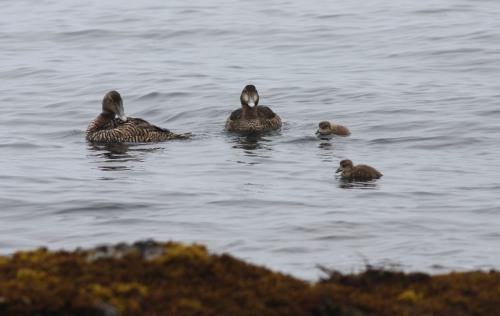
Common Eiders nest on Matinicus Rock in addition to the other seabirds.
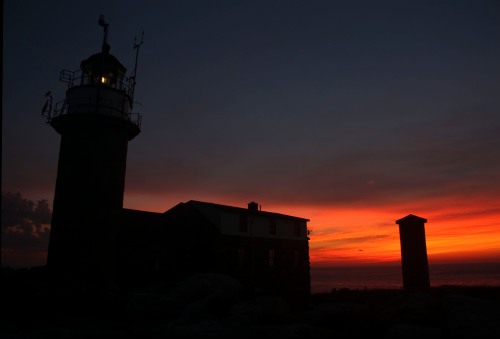
Another great sunset from the Rock.

And on our last day, we were treated by a brilliant Prothonotary Warbler!










































